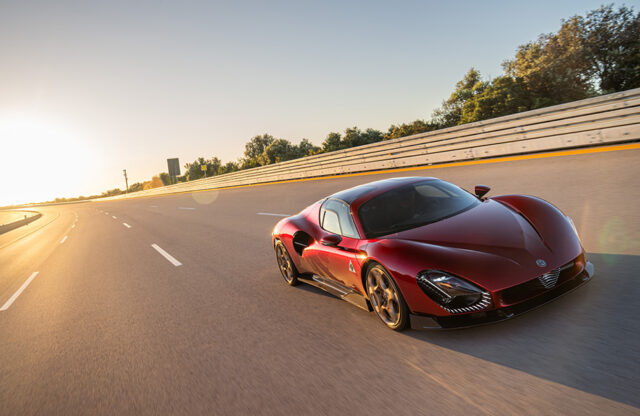Say hello to Lamborghini’s Fenomeno – the Italian marque’s most powerful V12 so far and the first car to be spawned from its Few Off department dedicated to limited-run productions.
The Fenomeno’s total output is 1080bhp, with 835bhp derived from its naturally aspirated V12; the rest comes courtesy of three electric motors. In keeping with previous limited-run Lamborghinis, the car is a test-bed for technologies – the Fenomeno has a 6D sensor and CCM-R Plus carbon-ceramic brakes. More on those later on – but first, the look of the newcomer, which is limited to just 29 examples worldwide.

Previous limited-run Lamborghini hypercars have previewed future styling trends – the Reventón in 2007 being a key example – and thid one celebrates 20 years of Lamborghini Centro Stile. Lamborghini describes the Fenomeno as “a new ‘design manifesto’: an unexpected, hyper-elegant theme in a longtail-proportioned super sports model.”
At the front, the two large intakes are inspired by racing Lamborghinis such as the Huracán GT3, while the daylight running lights pay tribute to the horns of the Lamborghini logo’s bull. At the rear, the single line through the car’s profile is said to have been inspired by the Essenza SCV12. The Fenomeno is also the first use of the new Lamborghini logo, unveiled in 2024.
When we spoke to Mitja Borkert at Goodwood Festival of Speed, we discussed that move toward a more elegant theme. With regard to the Fenomeno, he says: ““With the Fenomeno we are setting a new, authentic and brave course for our future-oriented design language. We have created a hyper-elegant design piece that is as refined and sophisticated as it is both athletic and essential. It is an unexpectedly elegant spaceship, made entirely from carbonfibre while remaining true to our heritage. The Fenomeno plays the music of our unique design DNA but with a different tonality and rhythm, creating another stunning legend that exceeds the highest expectations of our customers and collectors.”

Although the Fenomeno avoids the massive wings and aero seen on other Lamborghinis, the aerodynamics are still clever: air curtains that direct air flows parallel to the front wheels reduce drag and increase airflow to the radiators. An S-Duct at the front increases downforce and directs air to the roof, which channels it via a concave roof profile to the engine airscoop for cooling and to the rear wing for stability.
The doors – with a NACA duct motif that’s a nice nod to the Countach – direct airflow to side intakes, improving engine and radiator cooling by over 30 percent compared with a production Lamborghini V12. At the rear, a continuous line links the wing and wheelarch, with vertical Y-shaped lights integrated into the diffuser and exhaust design. The car has single-nut forged rims, 21-inch at the front and 22-inch at the rear, with Bridgestone Potenza Sport tyres.
This rubber has been created especially for the Fenomeno, and is sized 265/30 ZRF21 at the front and 355/25 ZRF22 at the rear. A more track-focused (yet still road legal) tyre will also available; both have developed using Bridgestone’s Virtual Tyre Development process.
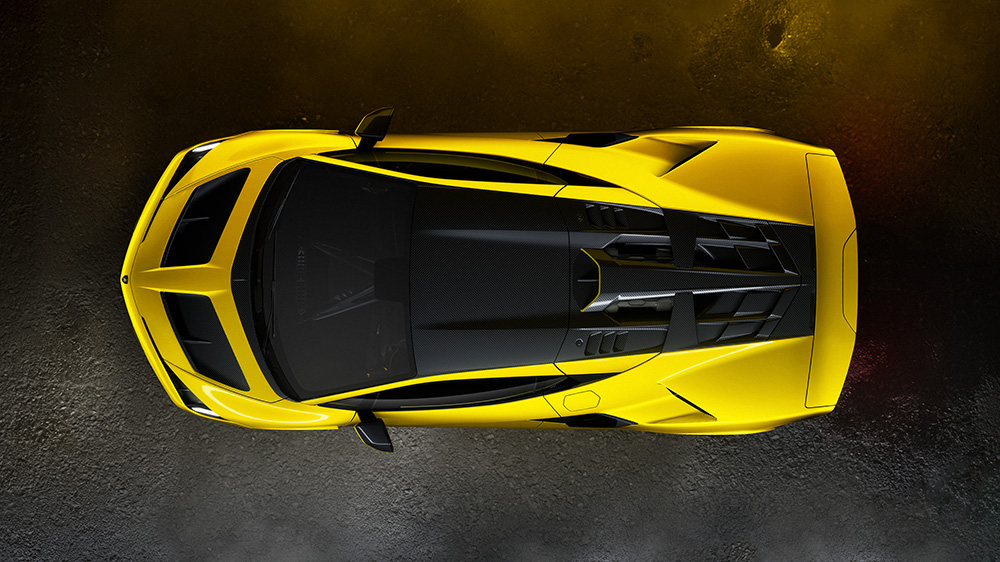
As for the engine, the oversquare V12 produces 835bhp at 9250rpm, aided by a redesigned valvetrain that delivers a vertiginous a 9500rpm red line. With 128bhp-plus per litre, it is the most powerful V12 in Lamborghini’s history, delivering 535lb ft at 6750rpm with 80 percent of that torque available from 3500rpm.
Power is sent to all four wheels; the V12 drives the rear axle, while two electric motors on the front axle and a third motor mounted above the gearbox supply additional torque to the rear as required. The engine delivers 535lb ft, each front motor adds 258lb ft, and together with the rear motor they produce a combined 1080bhp, aided by a new 7kWh battery developed specifically for the Fenomeno – that’s up from the 3.8kWh in the Revuelto. The two front motors are oil-cooled axial-flow units producing 110kW each and weighing only 18.5kg. As well as propelling the front wheels, they provide torque vectoring to sharpen handling and regenerative braking to improve efficiency.
So how fast will the Fenomeno go? Lamborghini says that it will sprint to 62mph in 2.4 seconds and kiss goodbye to double that speed in 6.7 seconds, with a top speed in advance of 217mph.

However, perhaps the most important new feature for mainstream Lamborghinis is the new eight-speed gearbox. It’s mounted transversely behind the longitudinal V12, leaving space in the central tunnel for the lithium-ion battery that powers the electric motors, which Lamborghini says helps reduce weight and keeps the footprint compact.
Above the gearbox sits an electric motor that acts as a starter and generator, supplying energy to the front motors through the centrally mounted battery. It also provides a boost function in fully electric mode and can drive the rear axle for zero-emission four-wheel drive. Its operation changes dependant on driving mode using a decoupling mechanism and dedicated synchroniser to connect to the gearbox. In position P3 the motor drives the rear axle and allows full EV running depending on mode. In P2 it recharges the battery when stationary or at low speed. This maintains four-wheel-drive capability even in electric operation.

Lamborghini says the increase in power and performance led to a complete redesign of the braking system to ensure strength, durability and stability. The Fenomeno uses the CCM-R Plus carbon-ceramic system derived from LMDh racing brakes such as those on the SC63, and the discs are built with a 3D structure using long carbonfibres in a carbon matrix and treated with a coating developed specifically for the Fenomeno.
Lamborghini claims that this extends service life and improves the coefficient of friction for maximum stability, durability and reliability. The marque also says the system maintains consistent response in all conditions and is supported by an aerothermal design that channels air to both discs and calipers for efficient cooling. The dampers are also adjustable for track or road use.

The Fenomeno’s vehicle dynamics are managed by an integrated control system centred on a new 6D sensor, used for the first time in a Lamborghini. Positioned near the car’s centre of gravity and linked directly to the Integrated Power Brake unit, the sensor measures acceleration and angular velocity across all three axes in real time. This data is used to calculate vehicle speed, the slip angle and the coefficient of friction between tyres and road.
The sensor works with the Integrated Vehicle Estimator, which uses Kalman filtering to predict vehicle behaviour so that related systems can adapt instantly. These include the Integrated Brake Controller, which manages wheel slip during braking and can reduce stopping distances by up to ten percent. Direct communication between the IVE and IPB improves braking performance in corners as well as in track scenarios such as running over kerbs, using precise real-time estimates from the 6D sensor.
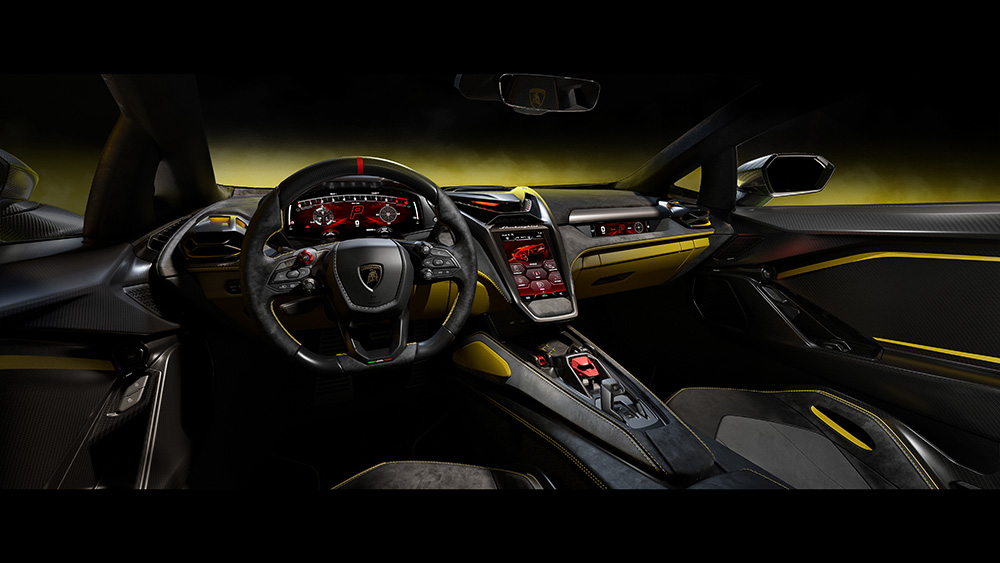
Lamborghini describes the interior concept as “presenting a new interpretation of Lamborghini’s ‘Feel like a pilot’ philosophy, creating an ever-deeper connection with the vehicle for both the driver and their passenger.” The three screens have been designed to be minimalist, but most of the physical buttons have been removed.
Carbonfibre dominates the interior, from the centre console with sport pad to the door panels and bespoke bucket seats, while the vents in the carbonfibre instrument cluster are 3D-printed. Through the Ad Personam programme, customers can choose from more than 400 exterior colours as well as a wide range of interior materials and finishes, creating a specification unique to each car.

We spoke to Matteo Ortenzi at Goodwood Festival of Speed, prior to the car’s reveal during Monterey Car Week. He sees the Fenomeno fulfilling the same role as the Reventón and Sian in developing aesthetic and engineering solutions for mainstream cars. “These projects were important for us as a brand statement for our customers; they were also a way to create a kind of laboratory to explore different designs while keeping our DNA,” he says.
So far, the ideas put forward by the Few Off have originated from Lamborghini itself, and Matteo believes that the company has read the market correctly because of the high demand for the Fenomeno. “For me the balance is very important when doing this kind of work,” he says. “There is no need to stress volumes to our customers, or how we are composing, because it is a very natural thing. It is a pure niche; once you have the right content and design in place, everything else follows.”
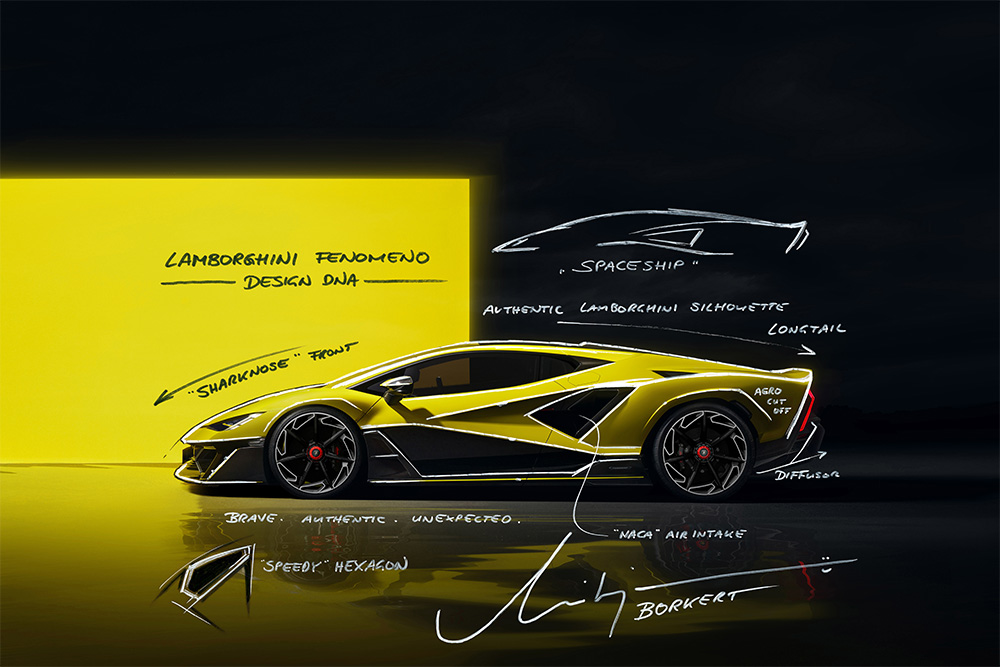
Matteo is very clear that the car is primarily intended for the road, but with track-ready capabilities – hence the lack of major wings. “It is a road machine but it is very fun to drive on track. I think a lot of our customers, even if it is a very precious car, will enjoy driving it on track,” he says.
“This is the pinnacle of our production. We wanted to create something that was very fun to drive but also a statement of our DNA and how we see productivity. That does not always have to be expressed through wings, aero or dynamics, because sometimes it is not needed. This has to be our business card to the world. That is why it is so important for the brand, because it shows what we are able to do in terms of technical content but also how cleanly the bodywork of the car can be executed.”
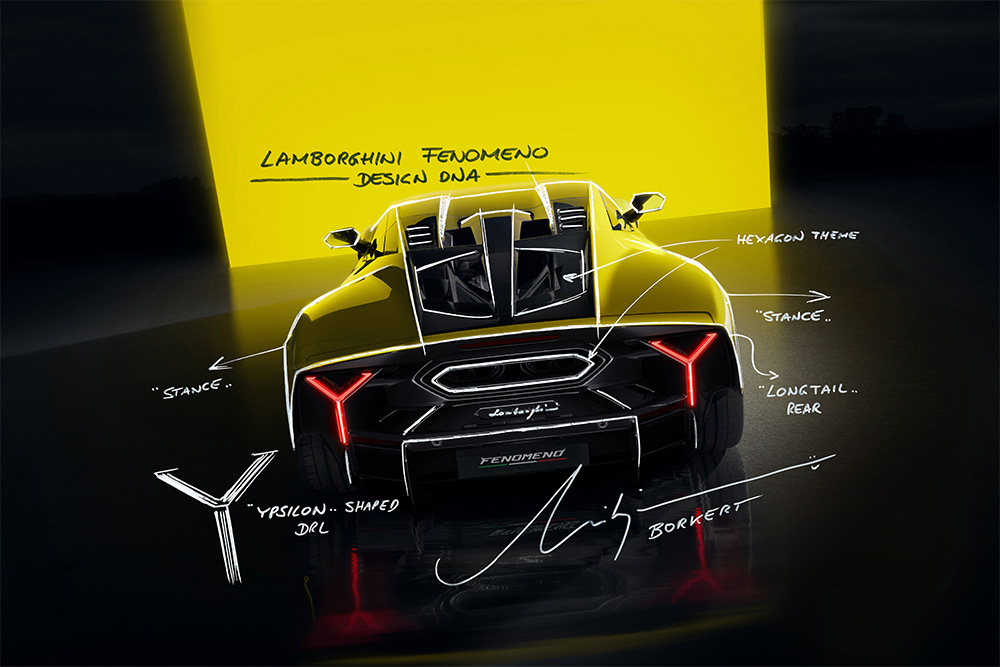
The car’s powertrain is shrouded in a monofuselage, which Lamborghini describes as an aeronautics-inspired chassis. It combines a full carbonfibre monocoque with a front structure in Forged Composite, a material made from short carbonfibres bound in resin. It’s been developed and used by Lamborghini since the 2007 launch of the Reventón – but the progress in carbonfibre technologies has continued apace since then.
“On the things that are not immediately visible, the technology allows us to do new things,” Matteo says. “One example is the use of short fibres in the Forged Composite. We are now combining this with long fibres to produce parts more quickly than in the past while maintaining the structural strength of the components. This is why, for example, the Revuelto has provided additional production capacity compared with the Aventador, because we are improving the process while preserving the benefits of carbonfibre.”
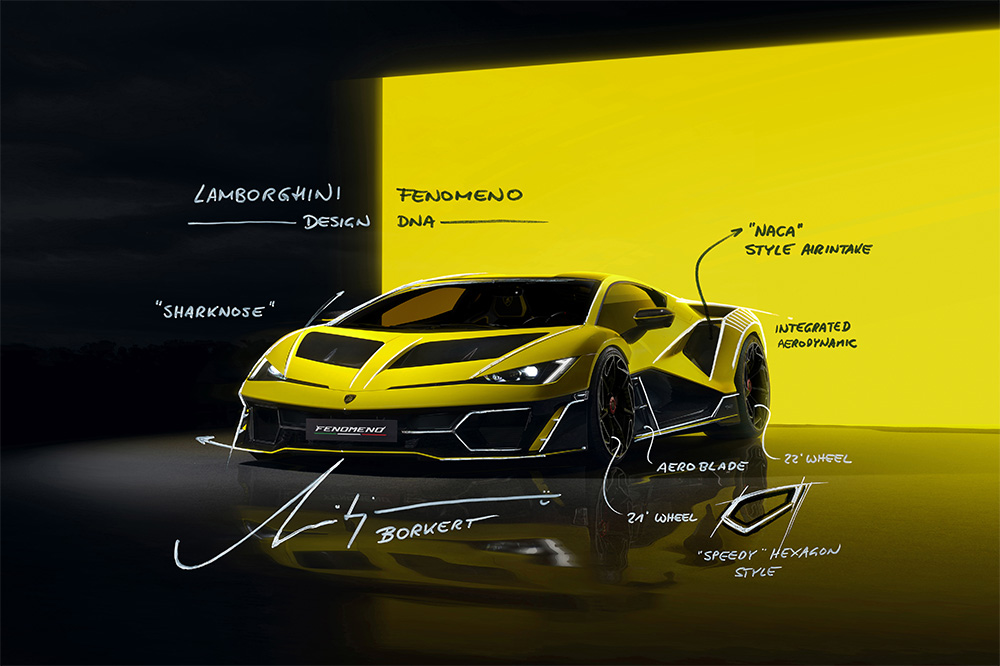
Looking ahead, the Few Off department isn’t on a treadmill of new launches. “We have a plan in front of us, but it really depends on the technology we want to include in the next car and the scale of our company,” Matteo says. “For example, when we developed the Revuelto, which was a new car on a new platform, the jump from the Aventador to the Revuelto involved using new technology. This is why it took time to present something new, because the amount of work required was enormous compared with the past.”
It also comes down to Lamborghini’s priorities, Matteo says. “We cannot do everything we want every year,” he says. “We are a small company and we have to focus on doing the right things at the right time.”
Although he and the Few Off department are keen for close collaboration with its customers, projects need to be right for Lamborghini. “There is a quick interaction between customers, the media and designers to ensure that what we are creating is a Lamborghini that reflects the customer’s wishes, not the other way around,” he says. “They can bring ideas, but it still has to be a Lamborghini.”
More details on the Lamborghini Few Off department and the new Fenomeno can be found here.


